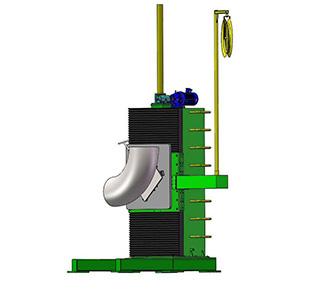
E-mail:sales@chinaolivet.cn

Welders Need To Know About Welding Positioners
As we all know, positioning equipment can help welders manipulate and weld large components. What may not be well known is that many small components can also be mechanically positioned to provide the same benefits as welders.
The positioning principle of all-welded parts is the same, no matter how big or small. The base product is fixed on the positioning device and then moved by mechanical means to a position that allows the most effective welding and assembly. When adding parts or components, the entire weldment is moved to make the welded joint more accessible.
Regardless of size, correctly positioned weldments can reduce welder fatigue, improve safety, improve welding quality, and save production space. By using mechanical means to move the welded parts and position the welding area within a comfortable range, the welder will not be forced to weld in inappropriate or uncomfortable positions.
When the weldment is fixed on a suitable positioning device, safety is improved. Cranes, chains, slings, and other non-rigid methods of moving parts can cause uncontrolled movement, which can be dangerous. With the help of the locator, the welder does not have to work under the potentially heavy weldment, reducing the risk of falling sparks, slag, or component damage.
Although many welders are qualified to do overhead and vertical welding, down welding, usually requires less training, allowing new welders to produce high-quality welds. Gravity helps the welder to weld downhill, resulting in equal legs of the fillet weld, smoother weld bead surface, reducing cleaning and rework time.
By combining the welding positioner, welding power source, and welding gun holder, the welding machine can perform semi-automatic welding, which is efficient and ergonomic. The locator holds the parts and operates under a fixed torch. This torch can be equipped with a braiding device to allow oscillations to fill large gaps or v-grooves. Consistent speed and welding torch position improve welding quality with greater repeatability. Through the communication cable between the integrated positioner and the welding power source, the operator only needs to send the start signal through the foot pedal or the start button, and the welding cycle will continue until the completion signal is automatically sent out. This method, usually used for girth welds, can be combined with residence time to create a puddle and fill the crater. The completed part is removed, and another is started.

Welding positioner
How the weldment is connected to the positioning device is as important as the positioner itself, because this is the point where separation occurs naturally. Production fixtures are designed for specific applications that are repeatedly executed. This type of fixture is permanently installed in the positioner, and its specific shape allows easy partial alignment.
For small positioning equipment, it is important that the unit is installed on a flat or even surface to prevent it from tipping over. If mounting holes are provided, they should be used to secure the positioner to a stable surface to prevent tilting when or if it encounters unexpected forces.
Wuxi OLIVET Machinery Equipment Co.,LTD.E-mail: sales@chinaolivet.cnTel: +86-510-8383 0908
Home About UsProductsQuality ControlCompany NewsContact Us Sitemap
Copyright©2015 Wuxi OLIVET Machinery Equipment Co.,Ltd. Technical Support: Reanod